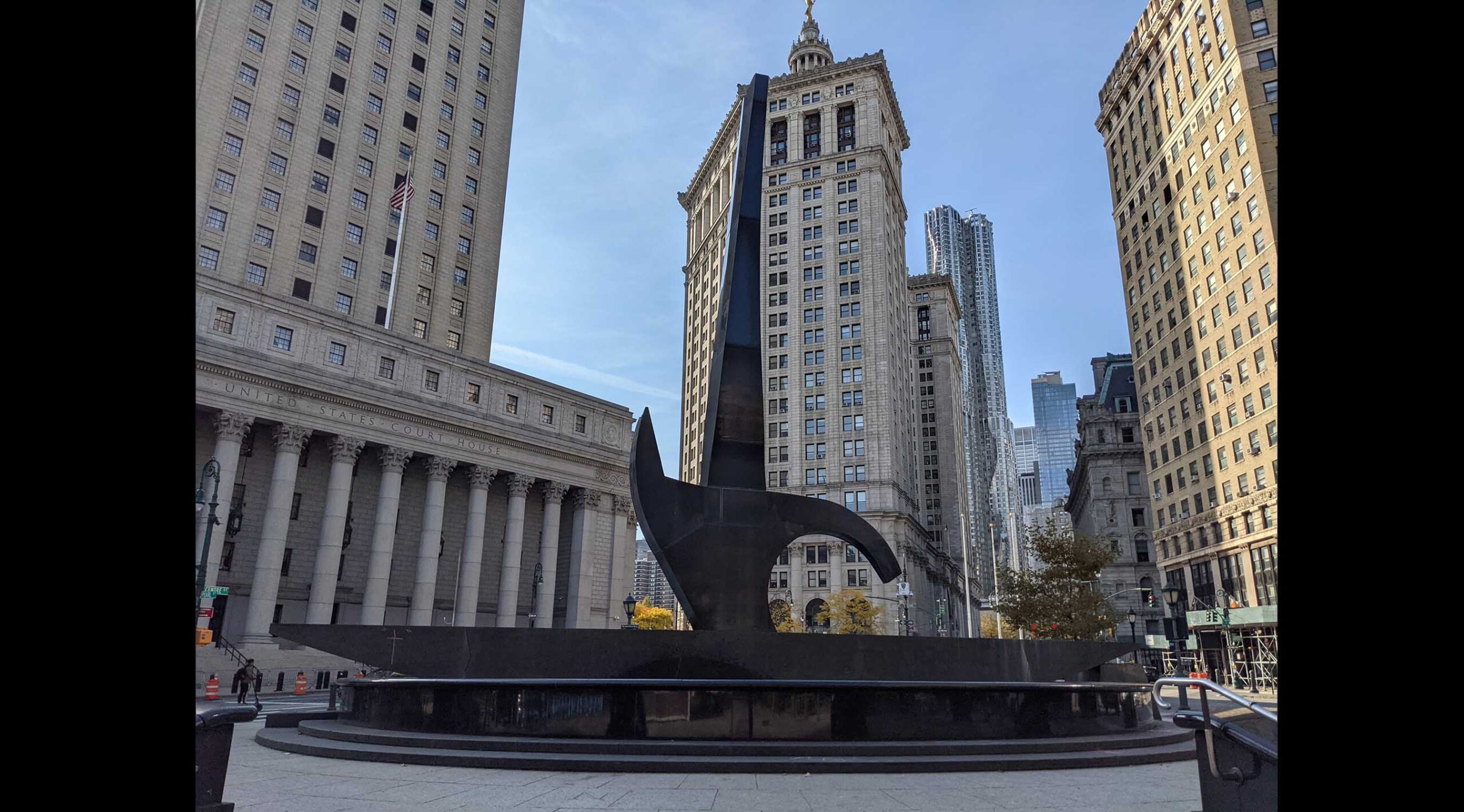 Built on a rediscovered Colonial-era African-American burial ground, Triumph of the Human Spirit is a large granite sculpture by Dr. Lorenzo Pace. Installed at Foley Square in New York City, New York, the piece is connected to the history of the city but also symbolizes a much deeper connection to the human spirit.
Built on a rediscovered Colonial-era African-American burial ground, Triumph of the Human Spirit is a large granite sculpture by Dr. Lorenzo Pace. Installed at Foley Square in New York City, New York, the piece is connected to the history of the city but also symbolizes a much deeper connection to the human spirit.
An 18th-century African-American burial ground was unearthed during the construction of Foley Square in 1991, with the remains of as many as 10,000 men, women, and children being interred in the area between 1712 and 1794. This history impacted the creation of Triumph of the Human Spirit and has been directly incorporated into the features and form that define the piece and allow it to dominate the space on multiple levels.

 The form of the sculpture alludes to headdresses that are from the Bamana people of Mali, West Africa. Known as “Chi Wara,” the form is connected to antelopes that the Bamana believe taught people to farm, and thus survive. The sculpture is set within an elongated boat-like structure that symbolizes canoes used by Native Americans, as well as the “middle passage” or overseas journey of enslaved Africans.
The form of the sculpture alludes to headdresses that are from the Bamana people of Mali, West Africa. Known as “Chi Wara,” the form is connected to antelopes that the Bamana believe taught people to farm, and thus survive. The sculpture is set within an elongated boat-like structure that symbolizes canoes used by Native Americans, as well as the “middle passage” or overseas journey of enslaved Africans.
The black granite abstract monument honors all Africans brought to America but is also dedicated to all ancestors as well as the future generations to come, further connecting it to the theme of freedom and endurance that goes beyond city and nation. Pace incorporated a very personal element into the piece as well, as a replica of the lock that shackled Pace’s great-great grandfather is a part of the base of the monument.
As an artist, author, master storyteller and performance artist, and lecturer, these are the types of underlying themes that Pace incorporates into his work. The success of Triumph of the Human Spirit has enabled him to receive international acclaim and exhibit his work in galleries and museums all over the world.
Commissioned by the New York City Government program Percent for Art, the piece rises almost 50 feet into the air and weighing over 300 tons, the piece is easily visible from other nearby landmarks, such as Thomas Paine Park. The physical and spiritual power possesses showcases what it can mean for a monument to capture the hearts and minds of audiences of all types.

